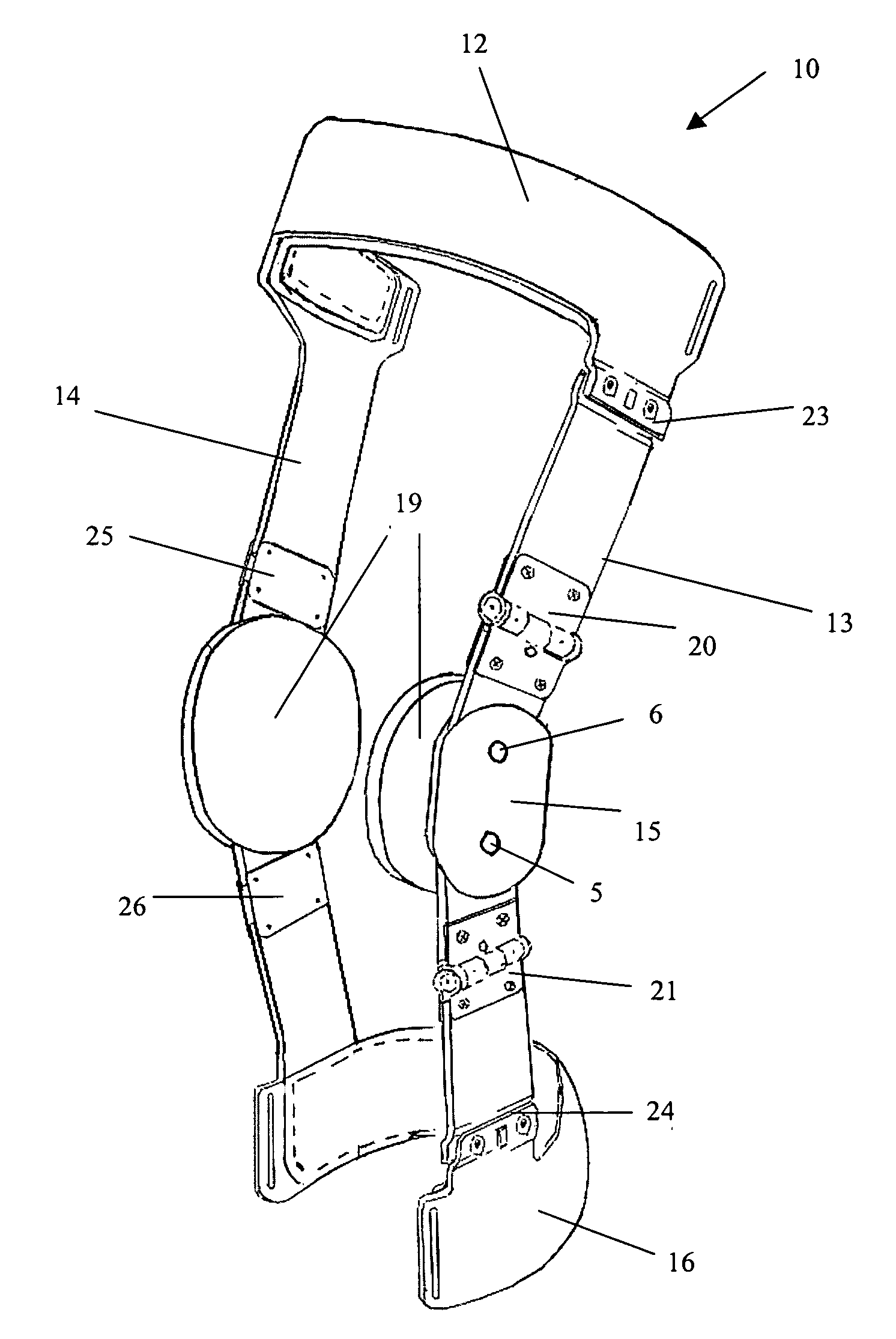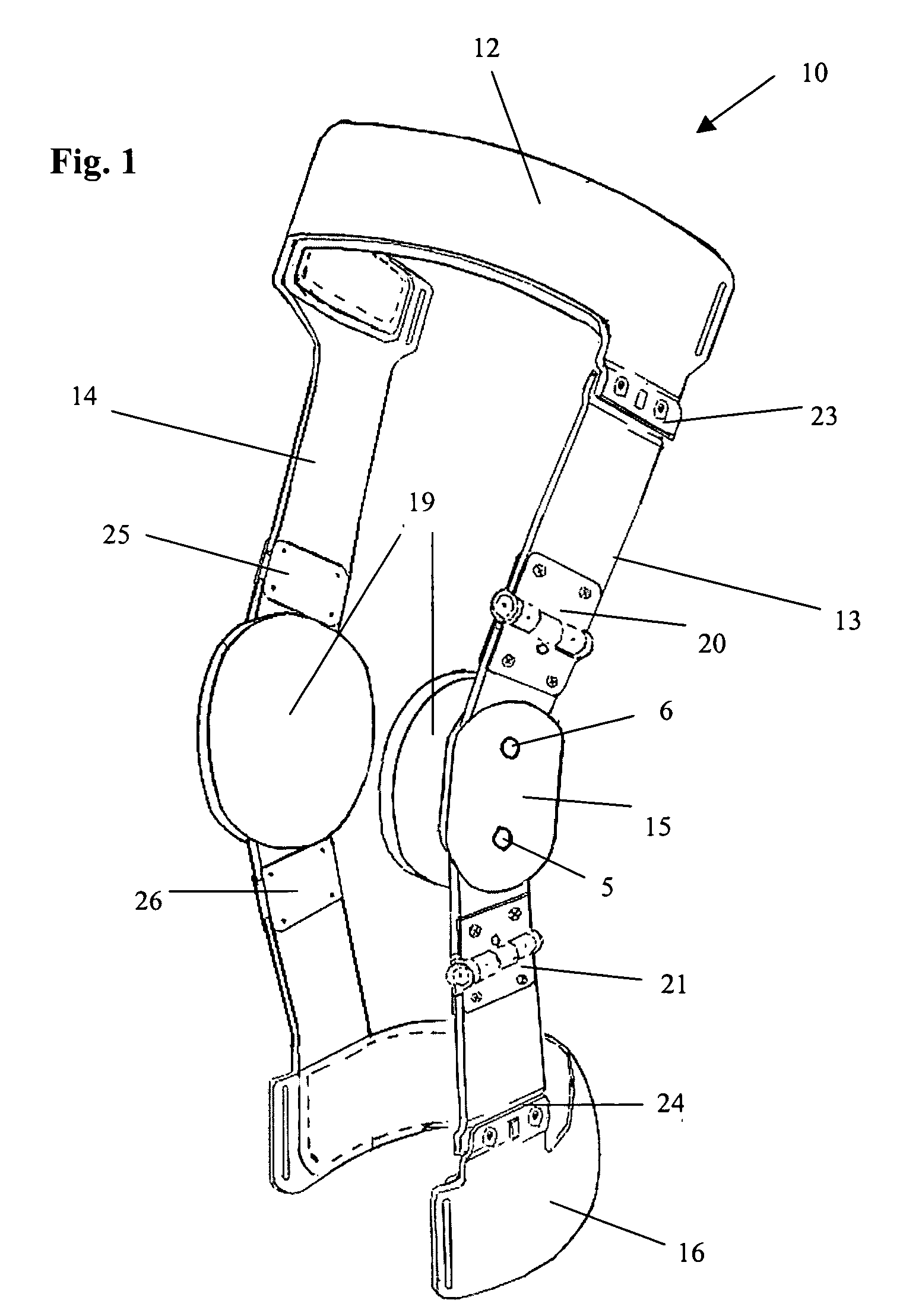Brace for osteoarthritic knee
a knee joint and bone brace technology, applied in the field of bone brace for osteoarthritis of the knee joint, can solve the problems of cartilage of the knee joint becoming worn, pain becoming constant, and reducing movemen
- Summary
- Abstract
- Description
- Claims
- Application Information
AI Technical Summary
Benefits of technology
Problems solved by technology
Method used
Image
Examples
Embodiment Construction
[0026]The present invention proposes to provide a knee brace, in particular for arthritic or osteoarthritic knees, which can eliminate or significantly reduce the drawbacks described above.
[0027]The present invention also proposes to provide a brace which is easy to adjust, even by the user, and which thanks to the presence of side uprights adaptable to the structure of the limb and the knee joint during flexion provides an appropriately controlled force at the knee, perpendicular to the axis of the leg, in such a way to exert a thrust force which alters the contact between the opposite condyles of the knee bone, reducing the pressure exerted on these condyles and limiting the pain.
[0028]This is achieved by means of a knee brace with the features described in the main claim and which can be applied in particular in osteoarthritic disorders of the knee.
[0029]The dependent claims describe advantageous forms of embodiment of the invention.
[0030]According to an advantageous form of embo...
PUM
 Login to View More
Login to View More Abstract
Description
Claims
Application Information
 Login to View More
Login to View More - R&D
- Intellectual Property
- Life Sciences
- Materials
- Tech Scout
- Unparalleled Data Quality
- Higher Quality Content
- 60% Fewer Hallucinations
Browse by: Latest US Patents, China's latest patents, Technical Efficacy Thesaurus, Application Domain, Technology Topic, Popular Technical Reports.
© 2025 PatSnap. All rights reserved.Legal|Privacy policy|Modern Slavery Act Transparency Statement|Sitemap|About US| Contact US: help@patsnap.com



